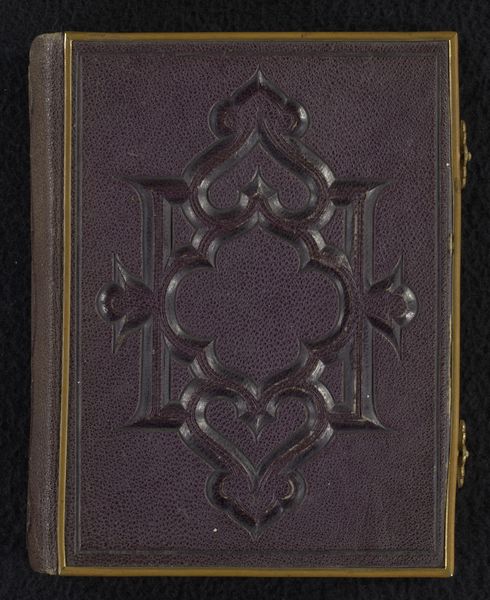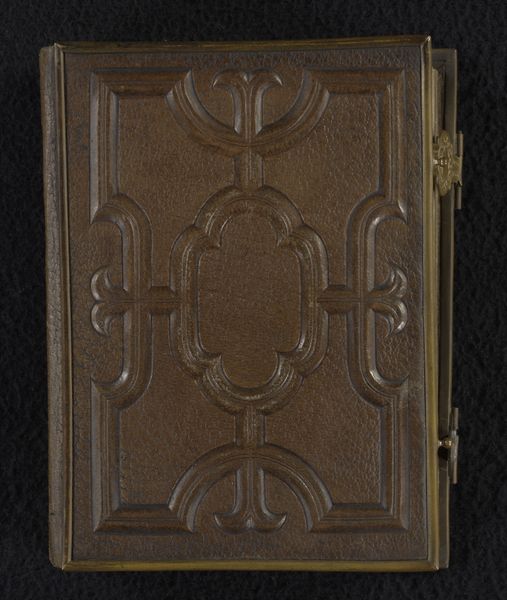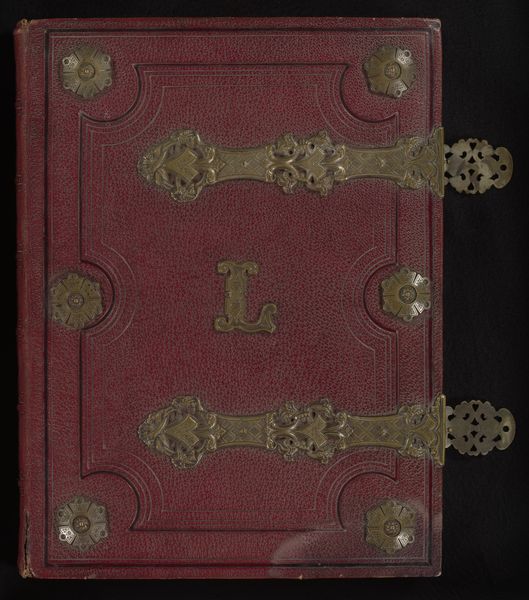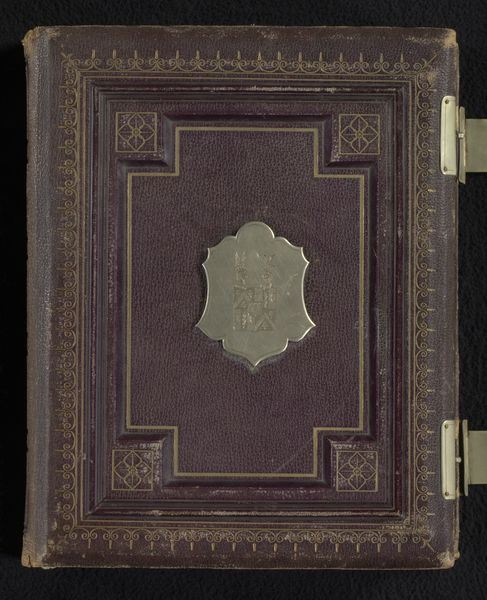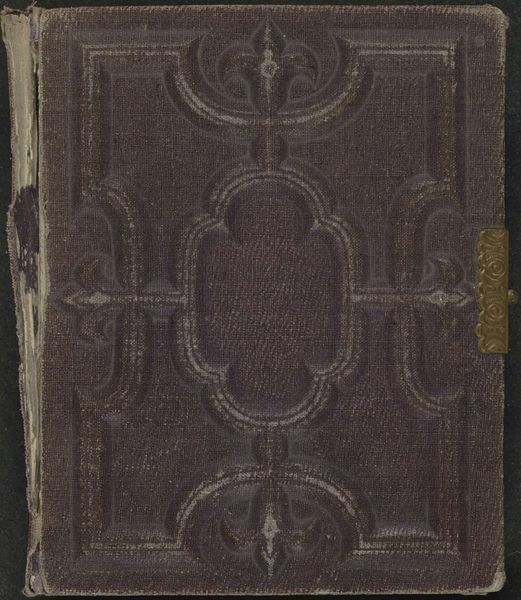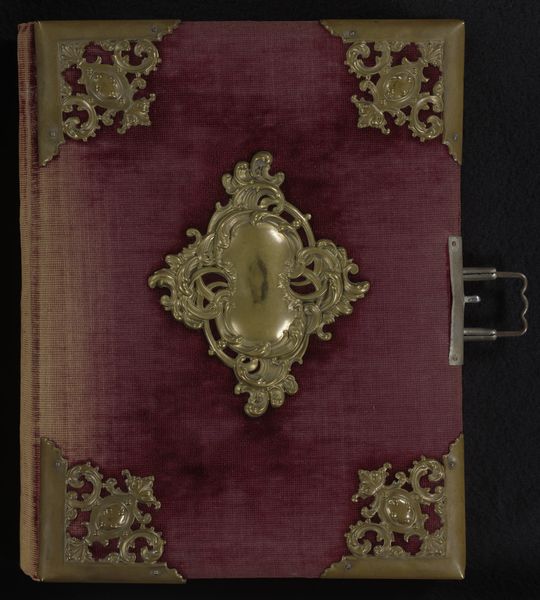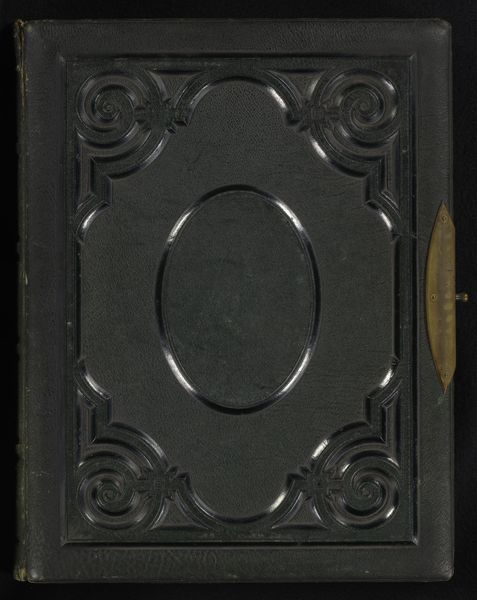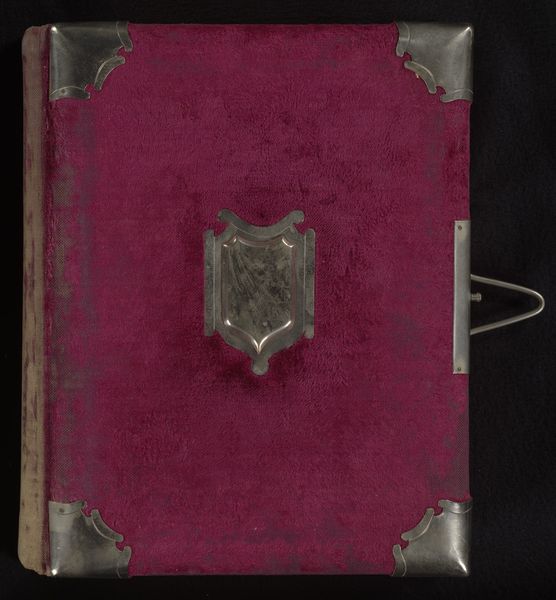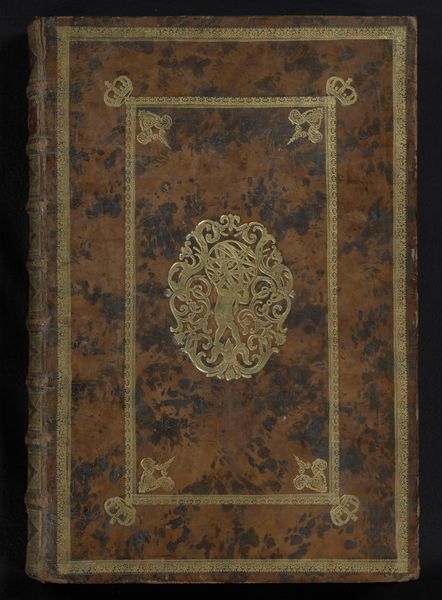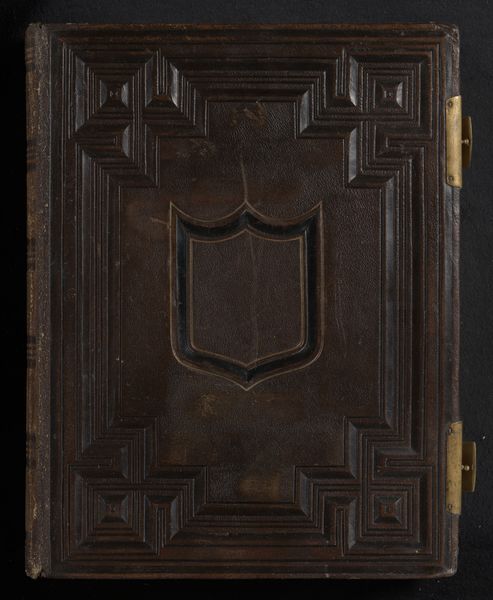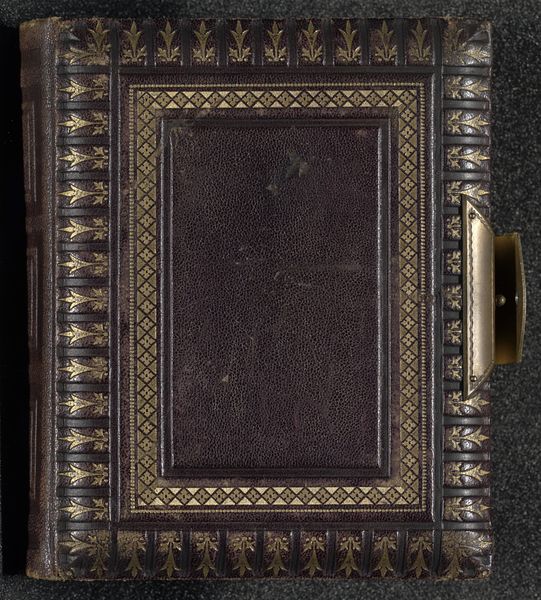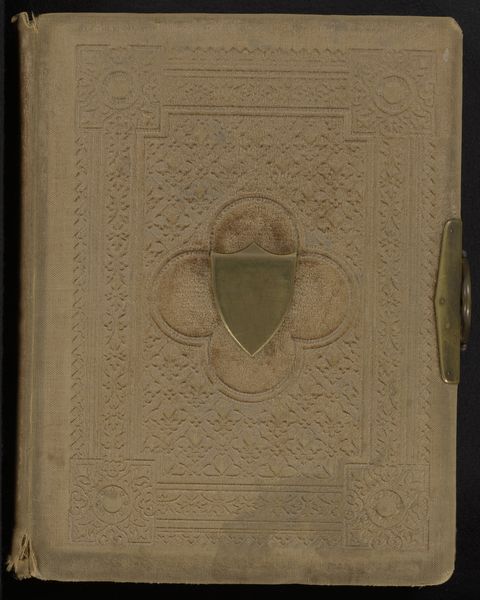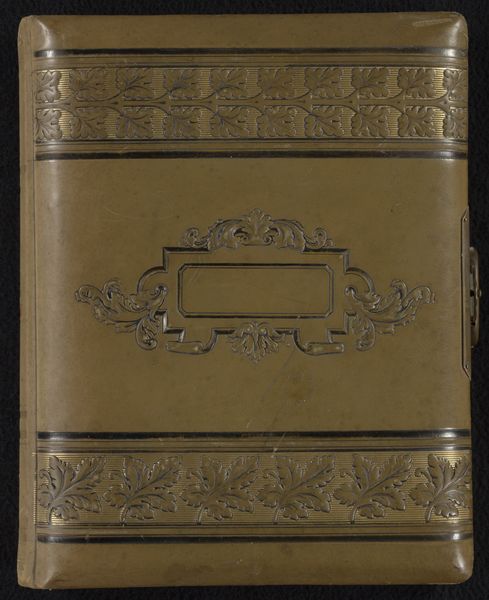
photography, albumen-print
#
portrait
#
still-life-photography
#
toned paper
#
muted colour palette
#
book
#
sculpture
#
photography
#
earthy tone
#
watercolor
#
albumen-print
Dimensions: height 300 mm, width 235 mm, thickness 65 mm, width 460 mm
Copyright: Rijks Museum: Open Domain
Curator: We’re looking at a Spanish photo album from between 1850 and 1900, currently held in the Rijksmuseum collection. The title is simply "Fotoalbum met 100 foto's, Spaans" Editor: My first impression is of understated elegance. The earthy tones, almost sepia-like even though it’s just the cover, suggest something precious and carefully constructed within. What materials are we seeing here? Curator: It is an album, employing the albumen print process popular at that time for its photographic prints. But here, we see just the cover, embossed with geometric patterns. Notice the central shield motif. I wonder what personal heraldry or ideals that space once represented to the original owner. Editor: Absolutely. That shield is fascinating. Beyond the symbolic, though, I’m drawn to the materiality. This looks like leather, deeply worked. The texture speaks of considerable labor. I am very curious to know who crafted the album, and what processes—tanning, embossing—they used. Were these common techniques? Curator: Indeed. The shield could symbolize protection of memories, a family's lineage, or a nation’s pride. During that era, photography itself was becoming a symbol, of remembrance and legacy. It's intriguing how the album cover both protects and proclaims these captured moments. Editor: I agree, and perhaps we are underestimating the original symbolic value attached to the very medium and process used, which even gave the album its earthy tones. The rise of albumen printing certainly democratized photography, but it still required specialized knowledge and equipment, a different kind of labor altogether compared to our world of digital snapshots. Curator: It’s a cultural artifact, then, revealing social values attached to image-making. This era witnessed photography transitioning from novelty to a widespread tool for documentation and personal expression. These albums themselves, physical containers of captured realities, acquired almost sacred status. Editor: Exactly. It’s easy to overlook the labor and social context behind such an object when presented behind glass in a museum. Thinking about the materials and the hands that shaped them offers a deeper understanding of its cultural significance and visual power. Curator: Reflecting on this photo album underscores how objects, especially those intended for preservation, gather symbolic and material weight over time, echoing the values of both their creators and their owners. Editor: Indeed, reminding us to look beyond the immediate image and to examine the conditions that made its creation possible.
Comments
No comments
Be the first to comment and join the conversation on the ultimate creative platform.
